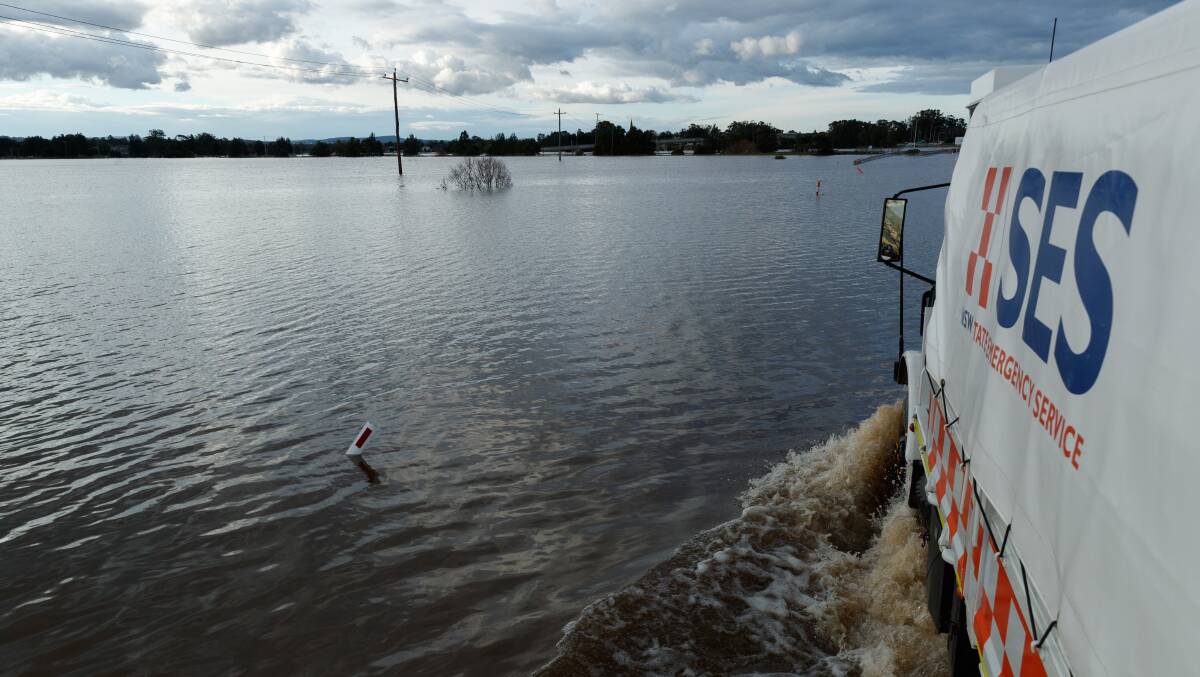
Government emergency response teams and the Bureau of Meteorology are preparing for more floods ahead of a 50-50 chance a La Nina weather system returns for a third consecutive year.
A briefing by agencies leading the federal government's emergency response team on Thursday warned of flooding and severe storms over the coming months along much of the Queensland and NSW eastern seaboard.
La Nina involves warming ocean temperatures in the Pacific, typically leading to increased rainfall across Australia.
The 2021/22 La Nina has officially ended but a back-to-back-to-back pattern could be on the horizon.
There is a 50 per cent chance of a La Nina forming in the Southern Oscillation for the third year in a row, an occurrence which has only happened three times in more than 120 years.
The Bureau of Meteorology will not be able to declare the weather pattern until October or November, with it still being too early to determine whether one will form.
This would also result in the early onset of the tropical cyclone and wet season for the top end of Australia.
Bureau chief executive Dr Andrew Johnson said landscapes are saturated, and dams and rivers are full, which was exacerbating flooding risks across much of eastern Queensland and NSW for the coming months.
He claimed it was typical to experience up to 22 east coast lows each year, with seven that are significant and two "really significant" lows with rainfall exceeding 100mm.
Dr Johnson said that the impacts of climate change were already evident with more intense rainfall events, lengthening fire seasons, and declining rainfall trends in SW Western Australia and the SE corner of Australia but it was difficult to link it to individual events, such as the wet weather deluge NSW experienced three weeks ago.
"We know frequency and intensity of severe weather is increasing all over the world," he said.
"We are experiencing that in Australia".
The bureau's outlook for August to October has forecast above average rainfall from Queensland down to the south coast of NSW, with parts of the Northern Territory also slated to get above-average falls in that time.
The bureau has warned the increased moisture in soils from previous deluges, along with water levels in dams and other catchment areas, make it easier for future flooding events to take place.
Coastal communities of NSW along with parts of Queensland are set to have an elevated flood risk in coming months.
The La Nina pattern contributed to the wetter-than average summer recorded in 2021-22, along with the devastating floods in Queensland and NSW in March this year.
This follows record rainfall and repeated flooding which has impacted regions across the east coast, most recently resulting in evacuation warnings for about 85,000 people across NSW earlier this month.
A Department of Recovery and Resilience Agency spokesperson said that primary responsibility for recovery following a natural disaster rests with state government, however the Commonwealth could provide support as needed.
"Recovery from a major disaster takes time and is different for each person and each community," they said.
"The Australian government is working closely with the NSW government to ensure the right support is provided to help individuals, communities and businesses recover as quickly as possible.
"This includes clean-up, making damaged homes safe and habitable and helping businesses and primary producers get back up and running."
READ MORE:
While normal fire conditions are predicted for most of the country over spring and early summer, there is increased risk for some regions in the Northern Territory and Western Australia.
In the briefing, the bureau said that above normal fire danger is predicted for the Kimberley and the Pilbara as well as south west Western Australia.
- With AAP

